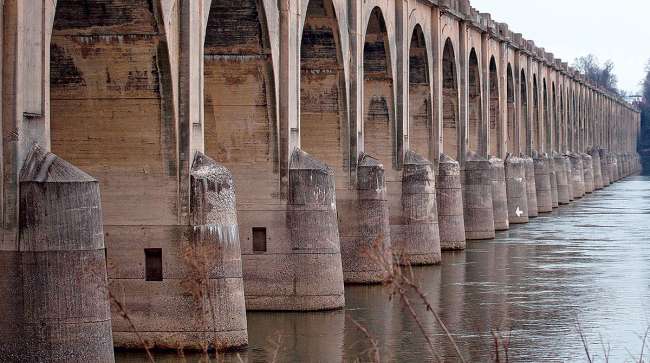Staff Reporter
Pennsylvania Gov. Tom Wolf Touts $4.5 Billion Infrastructure Plan

Pennsylvania Gov. Tom Wolf recently addressed thousands of township officials in an attempt to rally local support for his $4.5 billion infrastructure plan.
Wolf discussed his proposal, known as Restore Pennsylvania, at the Pennsylvania State Association of Township Supervisors’ conference in Hershey on April 15. The plan will devote $4.5 billion over the next four years to various infrastructure and development projects.
The revenue would be generated by a severance tax, which is imposed on the extraction of nonrenewable resources, such as natural gas, that are meant for consumption in other states. The tax, charged to those who produce natural gas, is imposed to compensate the state for the “severance” of the resource. Wolf’s plan presents a tax rate that varies based on the price of natural gas. The tax would become effective March 1, 2020.
At the #PSATSConf19 earlier today to discuss the infrastructure needs of PA townships and how Restore Pennsylvania could help fund:
Flood protection
Blight renewal
Contaminant removal
Broadband expansion
Learn how https://t.co/Q3IG2sTCWq pic.twitter.com/PK99b5YuBW— Governor Tom Wolf (@GovernorTomWolf) April 15, 2019
Pennsylvania is the country’s second-largest natural gas producer after Texas. According to the National Conference of State Legislatures, Pennsylvania is the largest U.S. natural gas producer that doesn’t have a severance tax, relying instead on an impact fee imposed on every gas and oil well in the state. Under Restore Pennsylvania, the impact fee would remain in place.
Wolf said that 80% of the revenue created by the tax would come from people who did not live in Pennsylvania.
“This would be paid for by non-Pennsylvanians to help our communities do everything they need to do to make sure they’re ready for the floods [and] to make sure that they’re ready for the 21st century,” he said. “I’m trying to put money behind programs that you all know you need in your communities to serve your people.”
One of Restore Pennsylvania’s goals is to direct revenue to upgrading roads and transit systems. Pennsylvania earned a C- on the American Society of Civil Engineers’ infrastructure report card, which was issued in November. Roads and bridges each received a D+.
READ MORE: ASCE gives Pennsylvania infrastructure a C- again
Specifically, the plan aims to maintain and improve Pennsylvania’s more than 120,000 miles of state and local roadways. There are more than 25,000 miles of unpaved roads in Pennsylvania, many of which serve as key links to the state’s agriculture, mining and forestry markets and have suffered because of heavy rainfall over the past year.
Some of the revenue will support flood control infrastructure, such as flood walls, dams and levees. The National Weather Service reported that 2018 was the wettest year on record in Pennsylvania. Heavy rainfall pummeled much of the state; one August storm created $60 million in transportation infrastructure damage. According to the Restore Pennsylvania plan document, the severe weather demonstrated the need to repair flood-control infrastructure.
Another major goal is to expand access to broadband. More than 800,000 Pennsylvanians do not have access to high-speed internet.
Several local groups from across the state, including those representing York, Harrisburg, Mount Pocono Borough and Erie County, as well as the mayors of Philadelphia and Pittsburgh, have endorsed the plan. Wolf stressed that the issues Restore Pennsylvania aims to address apply to everyone, regardless of party affiliation.
“This is not a partisan issue. This addresses problems that occur everywhere,” Wolf said. “When you have flooding in Bradford County, that’s not a Democratic or Republican issue. That’s an issue that affects human beings. Blight knows no political boundaries.”
Restore Pennsylvania Plan by Transport Topics on Scribd




